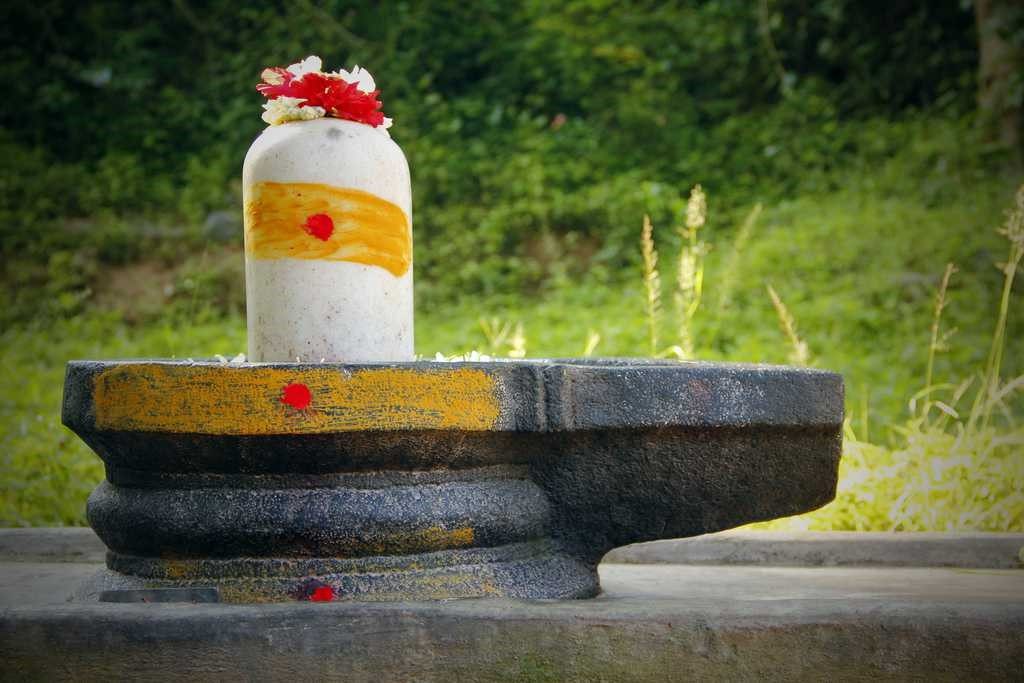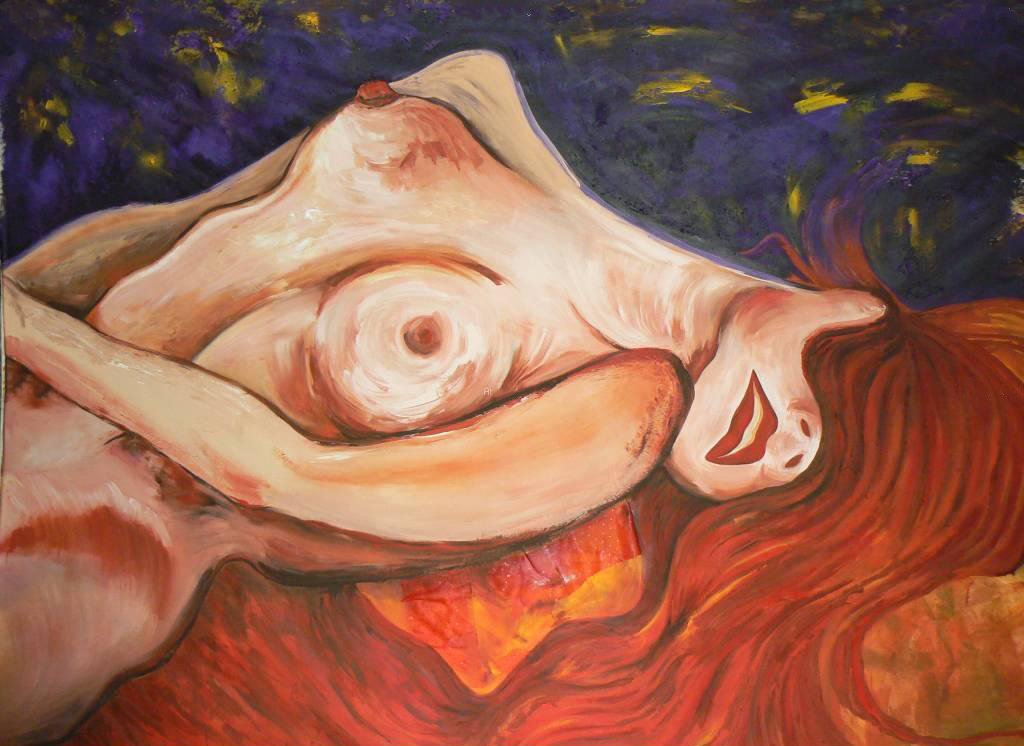Linga Massage for Men – Tantric Workshops in Barcelona, London and Madrid
As well as looking at Lingam massage, its benefits, what it involves and tips on tantric massage for men, we will also find out some interesting facts about the origins of the myth and rituals of Linga worship, both in ancient times and today. Linga (masculine energy, or Shiva) and Yoni (feminine energy, or Shakti) are inseparable energies in the tantric tradition and go beyond ‘man-woman’, so they tend to appear together in various tantric or sacred sexuality rituals.
The Origins of the Lingam or the Myth of the Lingodbhva (emergence of the Linga)
There is no consensus regarding the origin of the Lingam myth, or of just how Shiva came to be in the Deodara forest. To summarize the story as far as possible, Shiva disguised himself as a vagabond and proceeded to provoke some wise, supposedly mystic worshippers of the god. He provoked them by dancing completely naked with his penis in full view, whilst making obscene, sensual movements. His provocative dance drove the sages’ daughters and maids crazy with desire. Shiva’s wanted to test the ascetics and see if they could recognize him, the Transformer of the Universe, in the guise of a filthy beggar.
The sages, who were unable to recognize Shiva and blinded by Maya – the world of illusions – were infuriated and incapable of understanding what was going on. Once they realized that the stranger would not answer any of their questions, they cast a spell on him to separate his phallus from his body. As soon as they had uttered the words, Shiva’s member fell to the ground, burning everything in its path. At the same moment an endless column of light shot all the way down to hell and up to heaven, laying waste to the whole of planet Earth, leaving all living creatures and worlds afraid and in mortal danger.
The so-called mystics were terrified and begged Brahma for help, but he reproached them for their ignorance. He also admonished them for believing that they were above the mundane just because they practised meditation, fasting, going on pilgrimages and making sacrifices. However, this did not help them to recognize Shiva. Brahma told them that the great goddess Parvati, daughter of the mountain, should adopt the form of a vagina in order to captivate the divine phallus. The goddess Parvati in the form of a vagina would become the pedestal upon which the great phallus would be placed and venerated with songs, flowers, offerings and perfumes.
This is one of the possible origins in Tantra of the worship of Shiva, the Linga or Shivalinga.

The origins of the cult of the Lingam
From the pre-Aryan period, in the Hindustani peninsula, the ancient Dravidians worshipped a primitive version of Shiva called Pasupati, the animal protector, represented as a phallus. The Lingam is a remnant of a lithic-symbolic cult from the Neolithic period to Pasupati. Whilst Europe lived in the Stone Age, the Dravidians enjoyed life in an advanced civilization in the Indus Valley, trading with Sumer and Ancient Egypt. The study of archaeological remains at Mohenjo Daro and Harappa in present-day Pakistan reveals the development of both civilizations.
The main religion of the Indus was Shaivism and seals have been found depicting Shiva both with an erect phallus and as a cuckold, seated in yoga posture, in śakti ćalani āsana. He is also represented as Pasupati, the lord of the beasts, or dancing as Shiva Nataraja. Numerous Shaivite symbols appear on terracotta seals, such as stone phalluses, swastikas, bulls, snakes, unicorns and the mountain goddess. So we can safely conclude that the cult of Shiva and the Linga was a legacy passed on to the Hindus by the ancient Dravidians.
During the Linga cult, the Dravidians performed ecstatic dances orchestrated by a shaman adorned with the hollow skull and skin of a wild bull, both Shiva symbols. This kind of costume has been worn by shamans in various parts of the world. However, fertility was not synonymous with procreation, but with Life, and even in some cases of gibberish, or sexual catharsis. The aim was not to generate more offspring, but to liberate Kundalini. This is why, energies were channelled to seek Shiva-Sakti unity through Supreme Containment of the bindú, or sexual energy (often mistranslated as ‘semen’).
Depiction of the Linga
The Linga is always portrayed in its erect form and dark in colour, like the skin of its ancient Dravidian worshippers. The uppermost part, the glans, is typically well defined. For the purpose of worshipping they are made out of a variety of metals, as well as in silver, copper or stone. They can also be decorated with jewellery, flowers and fruits. Lingas are placed preferably in remote places, such as in the mountains, and Shiva sanctuaries are built far away from built up towns and cities, in accordance with the guidelines of the Vastu Shastra (the traditional Hindu science of architecture).
The Linga is like a shaligram – a pillar or menhir like the ones found across Europe that were worshipped by the ancient Celts, Etruscans, Iberians or Tartessians. Originally shaligrams were made of fossilized ammonites, although this was gradually replaced by any type of stone or metal. Ammonites are extinct cephalopod molluscs that lived in the seas from the Devonian to the end of the Cretaceous period (from around 400 million years to around 65.5 million years ago). Shaligrams are believed to be ‘svayambhū’, meaning ‘unoriginated’ (i.e. the capacity of objects to be self-existent, not dependent on the causal agency of another) and naturally embody the divine form, i.e. there has been no human intervention in their creation.
One of the most famous phalluses is the Ice Linga, a stalactite located in the Amarnath cave, a sanctuary over 5,000 years old in the state of Jammu and Kashmir, in northern India.
Religious worship ceremonies: the Linga Puja
“He who venerates the Linga in the knowledge that it is the original source, the source of all consciousness and substance of the universe is closer to Me than any other Being”. Shiva Purana.
During the Linga worship ceremony, milk, butter, water, fruits, sweets and garlands of flowers are placed on Him. Whilst the Shiva mantra ‘Om Namah Shivaya ‘ is sung, symbols of worship are drawn in their corresponding colours. The colour white is used for Shiva.
Usually a container called a jaladhari is placed on top, with a hole in its base to allow the water inside to pour onto the Linga continuously. This act has the symbolic value of appeasing the fiery nature of the yogi’s Linga – the one who is able to control his own passions, in his muladhara. At the climax of the ceremony, a viscous liquid made of milk and honey is poured over the Linga. It is then that Shiva manifests himself.
In the next article we will talk about tantra massage for women, don’t miss it!
[kkstarratings]



